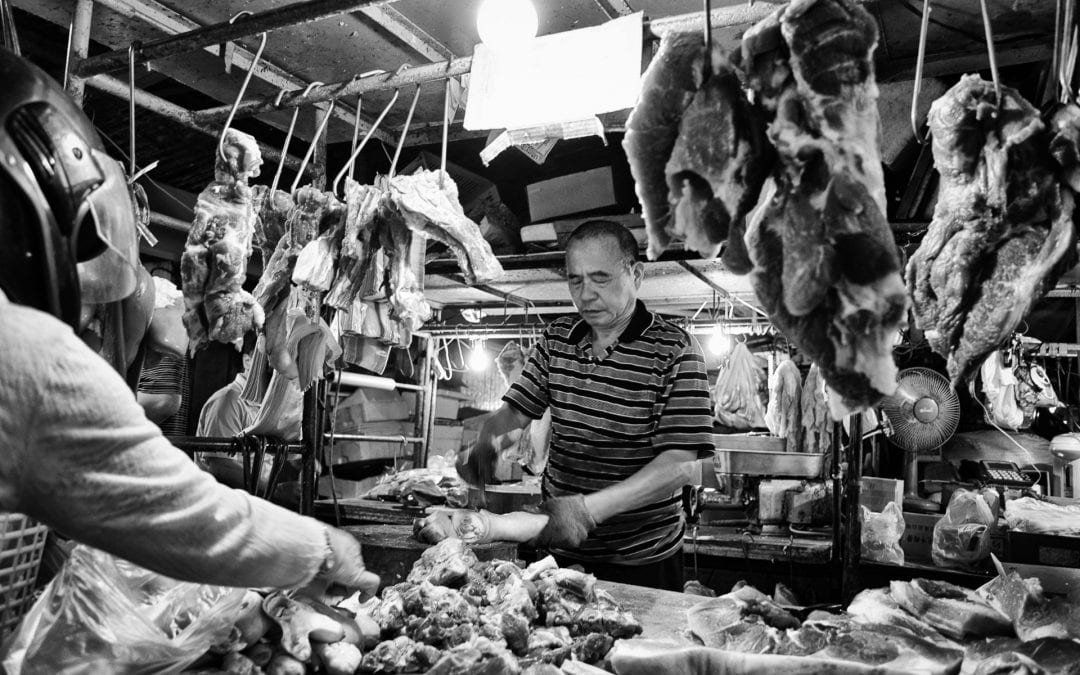By Devang Mehta
In the near future, “meat” could mean a lot more than it does now.
In the future, analysts agree that people will be producing—and eating—a lot more meat.
The United Nations Food and Agriculture Organization (FAO) has found that the consumption of meat has increased in nearly every single geographical region worldwide since 1960. The consensus from studies by the FAO, along with other researchers, is that by 2050, meat consumption will increase by 62 to 144 percent. A major driver for this increase is something called Bennet’s Law, an economic theory that suggests as people become richer, they begin to eat a more diverse diet, including more vegetables, more meat, and less carbohydrates. (This diversity also accounts for an projected increase in consumption of meat substitutes).
But a higher demand for meat doesn’t necessarily translate into more hamburgers; intriguingly, researchers have found that Americans are actually eating twice as much poultry now than they were in the 1970s, and more processed meat than beef. These changes are visible even just walking down the refrigerated aisle in your local grocery store. Sales of more traditional meat analogues, like tofu or Quorn, are on the rise, and other less conventional sources of protein such as insects have made it onto supermarket shelves in several Western countries.
In the near future, perhaps in a decade or two, many experts agree that in developed countries shoppers are going to be presented with an increased number of meat choices—whether sourced traditionally from animals, processed from plant-based protein, or grown in a lab. While the first cultured meat burger cost a whopping $325,000 USD in 2013, lab meat companies today insist that their products will soon cost the same, or even less, than traditional meat alternatives. In an interview with FastCompany, Yaakov Nahmias, founder of the lab meat startup Future Meat Technologies, went so far as to claim that in the future, “the burgers that we’re going to put on the grill, and the chicken nuggets that we’re going to eat at McDonald’s, and the barbecued chicken that we’re going to eat in Chipotle, is mainly going to be cultured meat,” suggesting that conventional meat will become a niche product sold only in more expensive restaurants.
But if these predictions play out and lab-grown meat reaches supermarket shelves in the next decade, how will consumers know what they’re buying? Will cells grown in a lab be labeled “beef?” The U.S. Cattlemen’s Association is concerned enough about the latent competition that they recently sent a petition to the US Department of Agriculture (USDA). It specifically defines meat as a product derived from animals that have been raised and slaughtered—excluding lab-grown meat. While the petition has been opposed by a coalition of lab-meat companies, lawmakers in Missouri have already approved legislation narrowing the definition of meat in order to protect the livestock industry. In France in 2018, a new law banned the use of terms like “meat” and “dairy” for vegetarian and vegan products. It’s not clear how this law will apply to cultured meat products in the future.
It’s unclear whether it’s right to distinguish between muscle cells grown in bioreactors, and muscle cells developed in whole organisms, but these kinds of arguments are actually quite common when it comes to other kinds of food. Recall the “oats don’t lactate” debate over what can be called “milk.” In fact, the FAO and World Health Organization publish a comprehensive guide to international food standards called the Codex Alimentarius. The Codex is responsible for defining food labels, mandating safety standards, and ensuring fair trade practices. And this often involves making meticulous distinctions between different types of meat and dairy.
In order to understand why farmers are so strenuously in favor of distinguishing between cultured and conventionally produced meat, I talked with Lorraine Lewandrowski, a New York-based dairy farmer and attorney. Lewandrowski is offended by cultured-food advocates who often vehemently reject traditional modes of meat production, but still want to use terminology associated with farming. She wrote via email, “It is repugnant to us [farmers] that someone can come along, make a product in a setting that has nothing to do with the lands, animals, farms or ranches, and then call it by the name we have always used…For some in urban areas, the prospect of destroying rural communities dependent on animal ag[riculture] and livestock seems like something to celebrate. It feels like we are not even people worthy of consideration in all of this.”
This battle over labeling foreshadows wider cultural divides. Whether or not lab products are eventually labelled “meat,” it’s clear that if prices for artificial meat drop, supermarkets of the future will carry a dizzying array of meat substitutes alongside conventional meat offerings. But what this might mean for the rising consumption of conventional meat worldwide—most of which is driven by countries in Asia, South America and Africa that have yet to see any cultured meat research and have very different animal agricultural systems compared with the West—is less certain.
This article was originally published on Massive Science and was republished with permission. For the original, click here.
Devang Mehta studies Genomics at the University of Alberta.
Disclaimer: The ideas expressed in this article reflect the author’s views and not necessarily the views of The Big Q.
You might also like:
What are the solutions to food insecurity? 🔊

